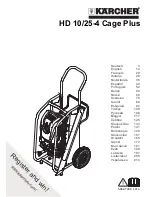
ENGLISH 19
Recommended loads are indicated
in the program charts. General
rules:
Washing a maximum load makes
the most efficient use of water and
energy. For heavily soiled laundry,
reduce the load size.
Cotton, linen:
drum full but not
too tightly packed;
Synthetics,
Delicate:
drum no more
than half full;
woollens:
drum no more
than one third full.
6.4 Maximum Loads
Blood
: treat fresh stains with cold
water. For dried stains, soak
overnight in water with a special
detergent then rub in the soap and
water.
Oil based paint
: moisten with
benzine stain remover, lay the
garment on a soft cloth and dab
the stain; treat several times.
Dried grease stains
: moisten with
turpentine, lay the garment on a
soft surface and dab the stain with
the fingertips and a cotton cloth.
Stubborn stains may not be
removed by just water and
detergent. It is therefore advisable
to treat them prior to washing.
6.5 Removing Stains
Rust
: oxalic acid dissolved in hot
water or a rust removing product
used in cold water. Be careful with
rust stains which are not recent
since the cellulose structure will
already have been damaged and
the fabric tends to hole.
Mould stains
: treat with bleach,
rinse well (whites and fast
coloureds only).
Grass
: soap lightly and treat with
bleach (whites and fast coloureds
only).
Ball point pen and glue
: moisten
with acetone (*), lay the garment on
a soft cloth and dab the stain.
Lipstick
: moisten with acetone (*)
as above, then treat stains with
methylated spirits. Remove any
residual marks from white fabrics
with bleach.
Red wine
: soak in water and
detergent, rinse and treat with
acetic or citric acid, then rinse.
Treat any residual marks with
bleach.
Ink
: depending on the type of ink,
moisten the fabric first with
acetone (*), then with acetic acid;
treat any residual marks on white
fabrics with bleach and then rinse
thoroughly.
Tar stains
: first treat with stain
remover, methylated spirits or
benzine, then rub with detergent
paste.
(*) do not use acetone on artificial
silk.
















































